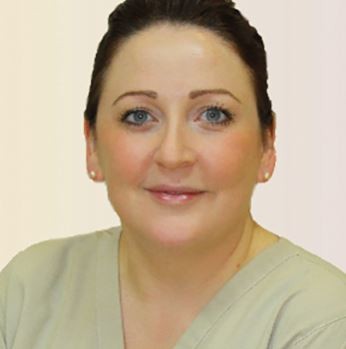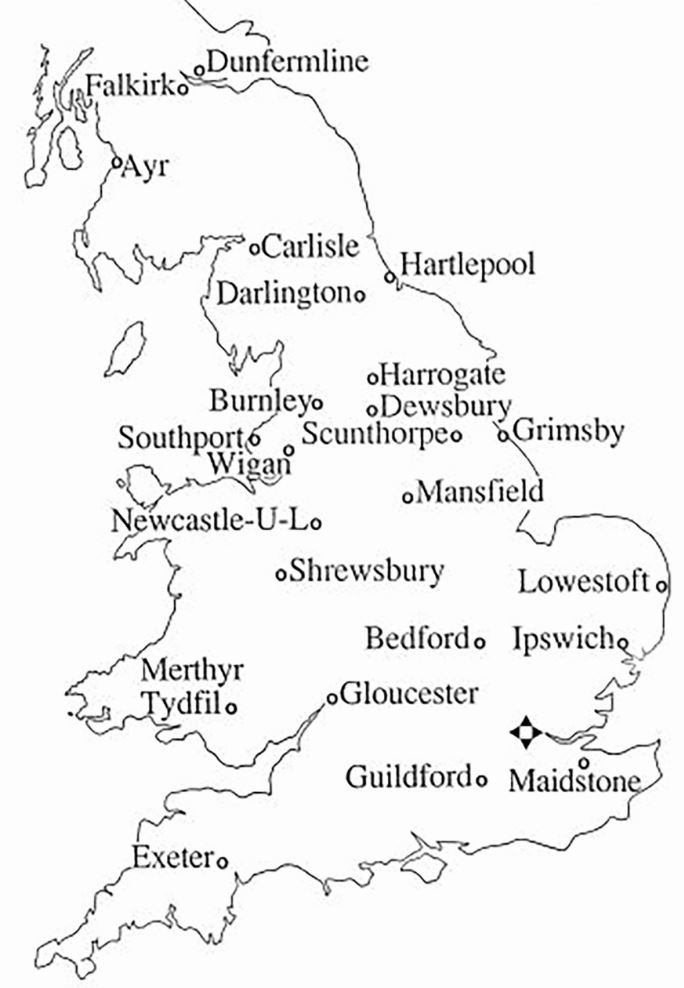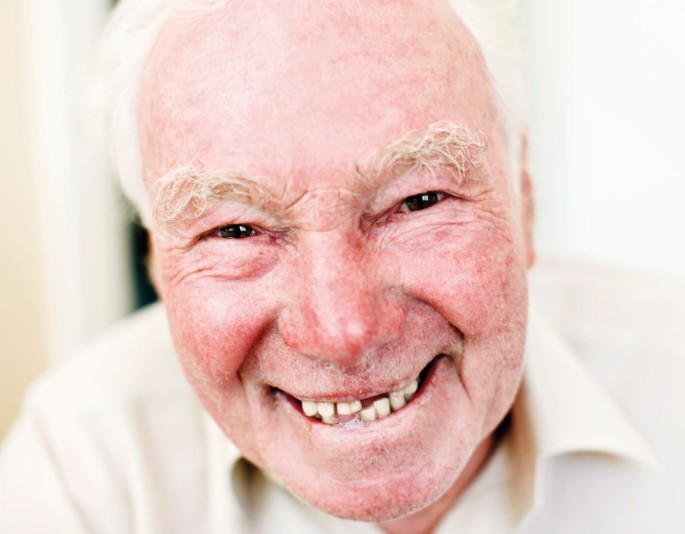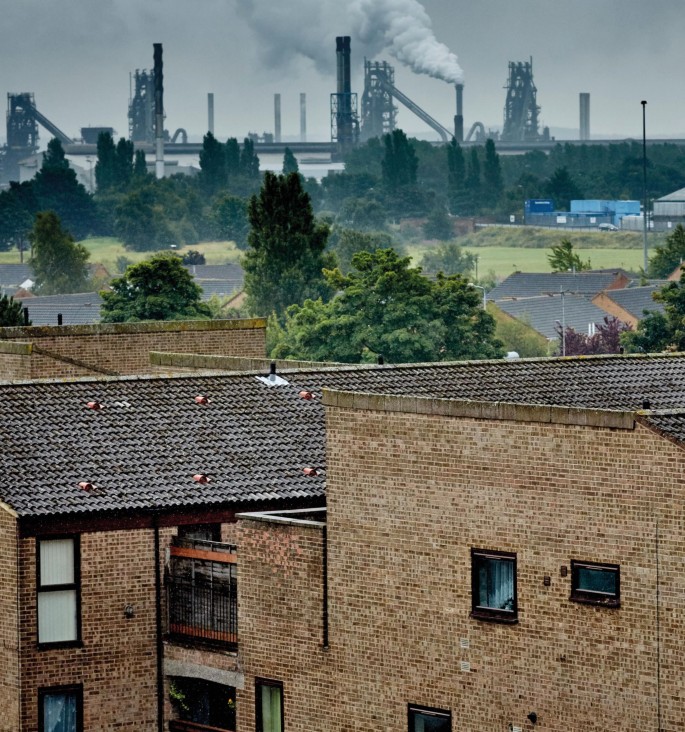After spotting a job advertisement for a research dental hygienist, Rachael England soon found herself in the job and out on the road.

After 13 years of working clinically, I was feeling the need for a new role outside the surgery and with a Master's in Public Health under my belt, I was particularly interested in academia. When I saw a role advertised for 'research dental hygienist' at University College London, the timing couldn't have been better.
I was joining the British Regional Heart Study (BRHS) as a member of the field team. This longitudinal study began in 1978 to understand why high numbers of men were dying prematurely. Around 7,500 men aged 40-60 were recruited via their local GP surgeries. Over the following 40 years the men have undergone several health screenings, activity monitoring, completed annual questionnaires and every two years the office team liaise with their GP surgeries to check for serious health events. At the outset, the team looked at hard water, cardiovascular disease and socioeconomic factors in 24 towns around the UK. The men are now aged 77-97, making it one of the longest running cohort studies in the UK.
In 2012, Dr. Sheena Ramsay joined the research team as Principal Investigator. Her early career as a dentist meant the study developed a more dental theme. As we know, the effects of oral-systemic disease are significant with this age group who may suffer from chronic diseases such as diabetes and cardiovascular disease. Also in this cohort, we could examine the self-reported diet sheets and carry out frailty assessments and dental health checks to see any associations between the remaining dentition and how 'well' the men are now.
The health screenings were to examine the remaining 1,400 men who are well enough to attend the mobile clinic in the town where they were originally recruited (see figure 1). The field team comprised a nurse, a phlebotomist and a dental hygienist (me). In addition to a dental examination, the men would have the following recorded:

Fig. 1
-
BMI
-
blood pressure,
-
arm, calf and waist circumference
-
frailty measurements (ie grip strength)
-
walking speed
-
time of standing to sitting
-
lung function.
The participants would also complete a memory test while they waited. The office-based team would find premises suitable for the mobile clinic, contact the participants, send reminders, deal with all administration and book hotels for the field team to stay in.
The first two weeks were spent at University College London training and organising the equipment and, most importantly, developing the study protocol and calibrating the dental measurements. Working with Dr. Ramsay, I developed a coded dental chart that would record:
-
pocket depth
-
loss of attachment
-
number of teeth
-
functional pairs of dentition,
-
dentures
-
xerostomia score
-
any other pathology.
I was also responsible for carrying out the lung function assessment using a Vitalograph machine. This is used to assess how well your lungs work by measuring how much air you inhale and how much and how quickly you exhale. The data it delivers - spirometry - diagnoses asthma, chronic obstructive pulmonary disease (COPD) and other conditions that affect breathing. This is especially appropriate among older people who may have been exposed to damaging substances in their earlier lives. The research manager thought the Vitalograph would fit well with the dental station and I only needed a day of training to get to grips with.
As health professionals we all have heard about the North/South divide and have discussed determinants of health during our training. Yet to see it so starkly, in real life, in front of my eyes was staggering.
Despite it being a relatively simple piece of equipment, the training didn't prepare me for the challenge of instructing patients who have experienced cognitive decline. Thankfully, the patient management skills I had learned through being a dental hygienist helped me through.
We then carried out a pilot study. Our statistician belongs to a church in North London and very kindly recruited members of the congregation. This allowed us to tweak the dental protocol, making it easier to record and ensure the whole set up worked smoothly with the right equipment. After a small electrical fire and an urgently purchased new Vitalograph, we were ready to head to the first town!

©RapidEye/E+/Getty Images Plus
Anxiously heading out of London to Bedford we navigated together. The first venue was a community centre, where we set up the mobile clinic in a conference room. Early the next morning the men started arriving.
Each day we had capacity to see 20 men. However, the number who came in varied greatly. Bedford proved to be quite busy, with fit, well and active men aged 80+, mostly still with the majority of their own dentition - albeit heavily restored. After three days we returned to London for a debrief. These sessions allowed us to deal with any challenges, make some input to the next stage and chat about the results.
Next, we headed off for two weeks in Scotland and the North-West. Dunfermline, Falkirk, Ayr and Carlisle. Far fewer participants attended and they were much frailer and mostly had broken or missing teeth or faded, plastic dentures.
As health professionals we have all heard about the North/South divide and have discussed determinants of health during our training. Yet, to see it so starkly, in real life, in front of my eyes was staggering.
Every town holds its own unique history that has shaped the health of these men and their rate of decline into old age. Taking a walk around in an evening I could observe the ghosts of past industry, Burnley's now converted cotton mills and the traces of a mining history, Scunthorpe's steel mills, Lowestoft's deep-sea fishing and Hartlepool, once a thriving port with ship building and steel making industries. With the decimation of the North-East's industrial age, 10,000 jobs were lost, leaving a town the hallmarks of endemic deprivation - substance abuse, urban decay, crime and twice the national average rate of unemployment.
One participant told me 'you'll never get rich working with your back', a testament to the tough, working lives these men have led. Despite this, I have never spent such precious time with people before, older participants who had served in World War II as well as those slightly younger who regaled us with stories of their National Service. We laughed with them over crazy adventures and cried with them when they described the passing of their beloved wives.
What really struck me was the poor state of dental health in every town - except (perhaps predictably), Guildford, Bedford and Southport. Nothing could prepare me for seeing such terrible neglect in so many men, I kept asking myself - how does this happen? How have we reached a state where our elderly are somehow managing without a functional dentition?
Some of the participants shared their barriers to treatment, such as a lack of:
-
funds
-
time - due to being the primary carer for their spouse
-
availability of NHS access
-
commitment to caring for themselves.
Many were just happy to maintain the status-quo and have regular check-ups and what we probably consider to be palliative dentistry. Is this acceptable with our current knowledge of the oral-systemic link and frailty in old age related to an ability to eat nutritious food?
Taking a walk around in an evening I could observe the ghosts of past industry, Burnley's now converted cotton mills and the traces of a mining history, Scunthorpe's steel mills, Lowestoft's deep-sea fishing, Hartlepool - once a thriving port with ship building and steel making industries.
We need to improve awareness in this age group that their oral health affects their general health and how important it is to see a dental professional regularly.
The role is intense as you see a participant every 10-15 minutes on a busy day. Ergonomics are pretty much out of the window as you lean over a masseuse bed to complete the examination.
Moving between towns was our greatest challenge, packing the equipment back into the van, driving several hundred miles, finding a new location and setting the clinic back up. The facilities varied from doctors' surgeries and church halls to community centres and conference halls. Being greeted with a friendly smile and a cup of tea was the reassurance we needed the session would run smoothly.

©Mark Waugh / Alamy Stock Photo
After 6 months the data collection was complete. It has been sent for entry and processing which takes up to 12 months before the research teams can begin analysis of the findings.
As a career option this role was a refreshing change from working in a clinic, without being too dissimilar.
Although dental hygienists can get involved with research through epidemiological data collection, I would really encourage dental therapists and dental hygienists to look into the role of Research Dental Hygienist. For me, it is wonderful to be a part of such a historic study that has made an impact on so many lives.
It is both fascinating and disturbing to witness first-hand the inequities in health the population suffer and how the determinants of health shape our lives. Our elderly population have amazing lives to share; we should all take the time to listen.
Author information
Authors and Affiliations
Corresponding author
Rights and permissions
About this article
Cite this article
England, R. Research dental hygienist - whoever knew there was such a role?. BDJ Team 6, 21–23 (2019). https://doi.org/10.1038/s41407-019-0004-y
Published:
Issue Date:
DOI: https://doi.org/10.1038/s41407-019-0004-y
